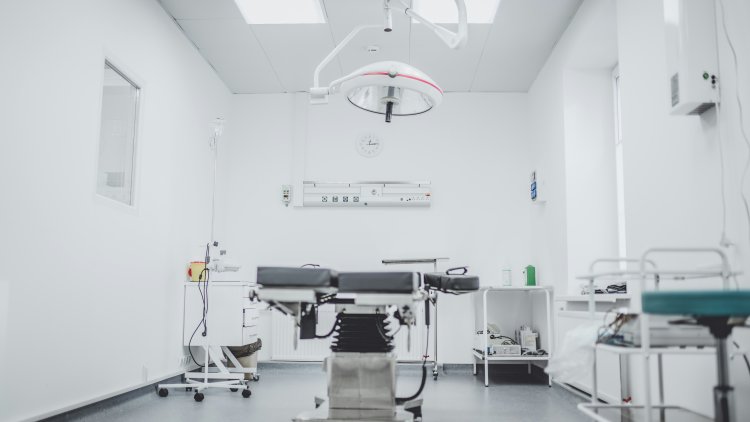The Role of Medical Equipment in Modern Healthcare
The Role of Medical Equipment in Modern Healthcare. The Importance of medical devices in healthcare. The vital role of medical machinery in the medical field.

Table of Contents:
1. Introduction
2. Importance of Medical equipment
3. Diagnostic Equipment
• X-Ray Machines
• Ultrasound Machines
• MRI and CT Scanners
4. Treatment Equipment
• Surgical Instruments
• Ventilators
• Dialysis Machines
5. Monitoring Equipment
• ECG Machines
• Blood Pressure Monitors
• Pulse Oximeters
6. Rehabilitation and Mobility Aids
• Wheelchairs
• Walking Aids
• Prosthetic Devices
7. Advancements in Medical Technology
8. Challenges in Access and Affordability
9. Maintenance and Safety Considerations
10. Conclusion
1. Introduction
Medical equipment plays a crucial role in modern healthcare, enabling healthcare providers to diagnose, treat, and monitor patients effectively. From diagnostic tools to treatment devices and rehabilitation aids, medical equipment enhances the quality of patient care and contributes to better health outcomes. In this blog, we will explore the significance of medical equipment in healthcare delivery, different types of medical equipment, advancements in technology, challenges, and considerations for maintenance and safety.
2. Importance of Medical Equipment
Medical equipment is essential for healthcare facilities to deliver high-quality medical services. It enables healthcare providers to:
• Diagnose medical conditions accurately and efficiently.
• Administer appropriate treatments and interventions.
• Monitor patients' vital signs and response to treatment.
• Facilitate rehabilitation and improve mobility for patients with disabilities or injuries.
3. Diagnostic Equipment
X-Ray Machines: X-ray machines produce images of internal structures, such as bones and organs, to aid in the diagnosis of fractures, tumors, and other medical conditions.
Ultrasound Machines: Ultrasound machines use sound waves to create real-time images of internal organs and tissues, helping diagnose conditions such as pregnancy complications, heart disease, and abdominal disorders.
MRI and CT Scanners: MRI (magnetic resonance imaging) and CT (computed tomography) scanners produce detailed images of the body's internal structures, allowing for the diagnosis of soft tissue injuries, brain disorders, and cancerous tumors.
4. Treatment Equipment
Surgical Instruments: Surgical instruments are used by healthcare providers during surgical procedures to perform incisions, remove tissue, and manipulate organs safely and effectively.
Ventilators: Ventilators assist patients with breathing difficulties by delivering oxygen-rich air into the lungs and removing carbon dioxide, supporting respiratory function during surgery, critical care, or respiratory failure.
Dialysis Machines: Dialysis machines filter waste products and excess fluid from the blood of patients with kidney failure, performing the function of the kidneys in individuals undergoing hemodialysis or peritoneal dialysis.
5. Monitoring Equipment
ECG Machines: ECG (electrocardiogram) machines record the electrical activity of the heart, helping diagnose heart rhythm disorders, ischemic heart disease, and other cardiac conditions.
Blood Pressure Monitors: Blood pressure monitors measure the force of blood against the walls of the arteries, providing essential information for diagnosing hypertension, hypotension, and cardiovascular disease.
Pulse Oximeters: Pulse oximeters measure the oxygen saturation level in the blood, indicating how well oxygen is being transported to the body's tissues and organs, particularly vital during anesthesia, intensive care, or respiratory therapy.
6. Rehabilitation and Mobility Aids
Wheelchairs: Wheelchairs provide mobility assistance for individuals with mobility impairments, allowing them to move around independently and participate in daily activities.
Walking Aids: Walking aids such as canes, crutches, and walkers assist individuals with balance and stability issues, enabling them to walk safely and confidently.
Prosthetic Devices: Prosthetic devices replace missing or injured body parts, restoring function and mobility for individuals who have undergone amputation or limb loss.
7. Advancements in Medical Technology
Advancements in medical technology, such as robotic surgery, telemedicine, wearable devices, and artificial intelligence, are transforming healthcare delivery by improving accuracy, efficiency, and patient outcomes.
8. Challenges in Access and Affordability
Despite the benefits of medical equipment, access to advanced technology can be limited in some regions due to cost, infrastructure, and resource constraints, leading to disparities in healthcare access and outcomes.
9. Maintenance and Safety Considerations
Regular maintenance, calibration, and quality assurance are essential to ensure the safe and effective operation of medical equipment. Healthcare facilities must adhere to strict safety standards and protocols to minimize the risk of equipment malfunction or failure.
10. Conclusion
Medical equipment plays a vital role in modern healthcare, enabling healthcare providers to deliver timely and effective medical services to patients. From diagnostic tools and treatment devices to monitoring equipment and rehabilitation aids, medical equipment enhances patient care, improves health outcomes, and contributes to the overall quality of healthcare delivery. Despite challenges in access and affordability, advancements in medical technology continue to drive innovation and improve patient care worldwide. Healthcare facilities need to prioritize maintenance, safety, and quality assurance to ensure the reliable and efficient operation of medical equipment and promote patient safety and well-being.
What's Your Reaction?





















